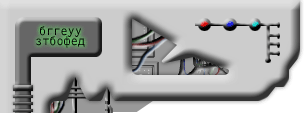The Germans have a new 7.92-mm automatic rifle, the F.G. 42 (Fallschirmjäger
Gewehr 42), which is a light and versatile weapon, especially suitable for use by German airborne personnel. It should
be remembered that the 9-mm machine carbines (M.P. 38/40), which are now in general use, were originally introduced
as parachutists' weapons; in like manner, the Germans may well put this new 7.92-mm rifle to more general use in the future.
The new rifle (see figure), which represents a departure in small-arms
design, is a close-combat weapon firing any 7.92-mm Mauser rifle ammunition, and combines a relatively light weight [1] with
a reasonable degree of accuracy both in single-round and automatic fire. The Germans have struck a balance between the weight
limitations of the machine carbine and the power and pressure requirements of the rifle or light machine gun.
![[New German Paratrooper Rifle]](http://www.lonesentry.com/articles/fg42/fg42_paratrooper_rifle.jpg) |
| New German And Japanese
Rifle |
The F.G. 42 is air-cooled and gas-operated. In spite of the extensive
use of stamping, instead of intricate machine-tool work, and in spite of the fact that all component weights have been reduced
to a minimum, the new weapon is fairly sturdy.
It is provided with a light folding bipod and a spike bayonet which, when
attached, increases the over-all length of the rifle from 3 feet 1 inch to 3 feet 8 1/4 inches. The feed
is from a 20-round box magazine which fits into the left side of the gun. The magazine may be loaded separately or from standard
5-round Mauser clips from the right side of the gun.
The F.G. 42 may well be used as a "powerful" machine carbine, as a "short
range" self-loading rifle, or as a light machine gun when mounted on the bipod.
1 The F.G. 42 weighs 10 3/4 pounds with the bayonet and with a filled 20-round
magazine.
the japanese also used this gun in the bunkers they built underground.

